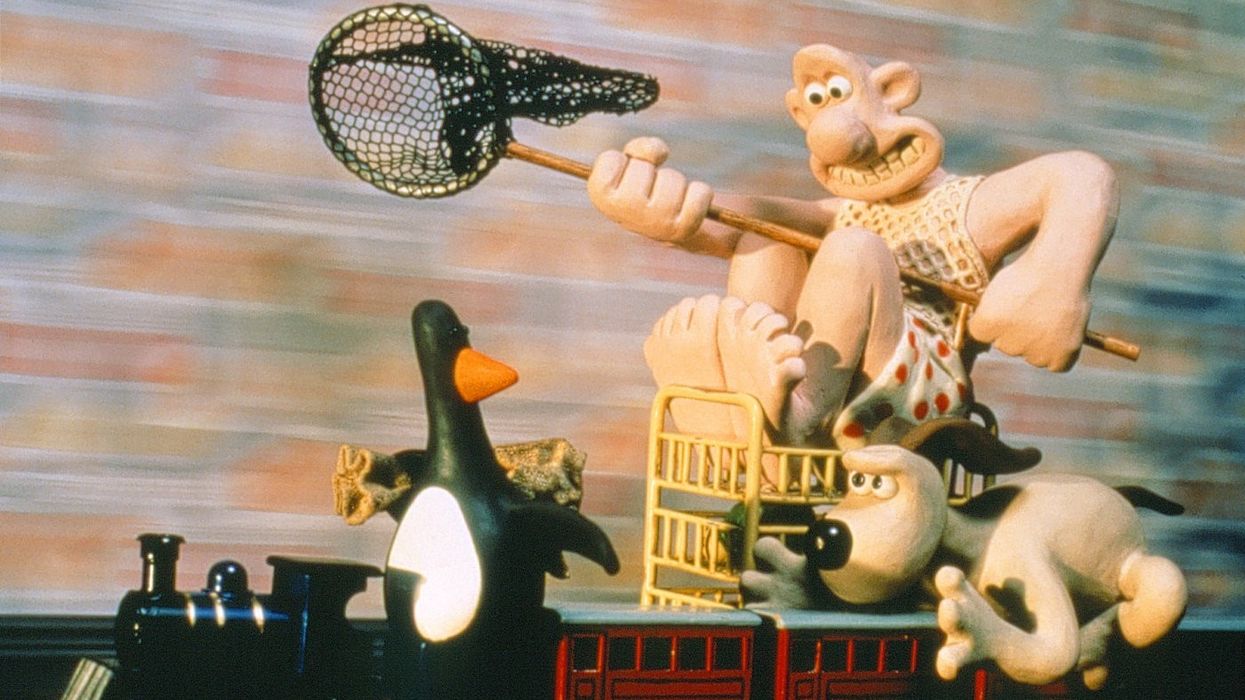Watch: 5 Tips for Making a Perfect Action Scene
Action is a movie staple, but how do you do it right?

If you want to know how a clock works, take it apart. You look at the way one piece fits into another, the way the gears turn in relation to each other, how the parts become the whole. Then, whether you can put the same clock back together is irrelevant. You've learned something. Films work the same way. If you want to know how they work, take them apart, scene by scene, shot by shot, line by line.
Patrick Willems's new video essay does just that with an action-packed scene from the short film The Wrong Trousers, in which the beloved Wallace and Gromit chase a duck named Feathers, who's stolen some very valuable diamonds, to answer a question that's probably on many young filmmakers' minds constantly: how do you make a great action scene? Check out the video and read our top five takeaways below.
1. "Therefore" and "but" are your friends
Early in the video, we see a clip from a tutorial by Trey Parker and Matt Stone, in which they drive home the point that if the word you can envision between two events in your storyline is "therefore" or "but," you're in good shape. If it's "and then," you have a problem. The driving idea here is that unless a story is constantly surprising the viewer, making abrupt about-faces, or presenting new problems for a character to solve, it isn't doing its job and viewers are going to lose interest.
2. Keep the beat alive
One idea that the video more or less hinges on is that of the "beat" in storytelling. Just as a piece of music might have beats that measure its rhythm, a story has points, or events, that can be used to measure its progress. We call these beats, and the more you know about their timing and their arrangement, the more interesting your story will be. In the two-minute scene Willems posits as the perfect action scene, he counts over 24 beats. As an experiment, you could take a favorite scene and see how many beats you count. The results might surprise you.
The minute you think you can predict the direction a story is about to take, it should turn on its heels.
3. Reversal upon reversal
As with life, no good story proceeds without problems and complications. Scriptwriters and filmmakers call these problems reversals, and they are essential. If you were to dissect any one of your favorite film scenes, you would see that the minute you think you can predict the direction a story is about to take, it turns on its heels. These turns can either be very subtle, or they can be tectonic. The video offers a substantial discussion from screenwriter Shane Black on the successful deployment of reversals, in what he calls the "haystack game", in which each event that takes place in a story merely offers an opportunity for another switch-up.
4. Set it up and pay it off
When Anton Chekhov issued that famous dictum concerning guns, first acts, final acts, and firing, it wasn't gratuitous—if you leave too many loose threads in a narrative it eventually falls apart like an old blanket. If you introduce a story element that could change the shape of the story, make sure you follow through; if you don't, your viewers will notice. Shane Black suggests that some effective storytellers hide their set-ups, so that you don't know it was there in the first place until it's paid off. In the scene from The Wrong Trousers, an escape hatch for Feathers is introduced early in the scene, but it's done in such a way that it might not fully register... until it's comically paid off. (Just watch the scene.)
5. Be clear
Clarity, in films of any type, is a virtue. The simplest action scene is the best action scene, at least by the terms of this piece. Who's chasing who? Where are they going? Why are they going there? Who's the protagonist? Who's the antagonist? The answers to all of these questions have to be very clear, or the action in the scene may lose traction with viewers. As Willems points out here and at the beginning of his piece, visual storytelling is essential: in the Wallace and Gromit scene, wide shots predominate. Why? Because they give more information. The shots also have to be set up in a way that leaves no doubt as to characters' positions and identities—and what directions they're moving in.
What are your favorite action scenes? How many beats do they have? Where are the reversals? Do they make sense? Let us know in the comments!














